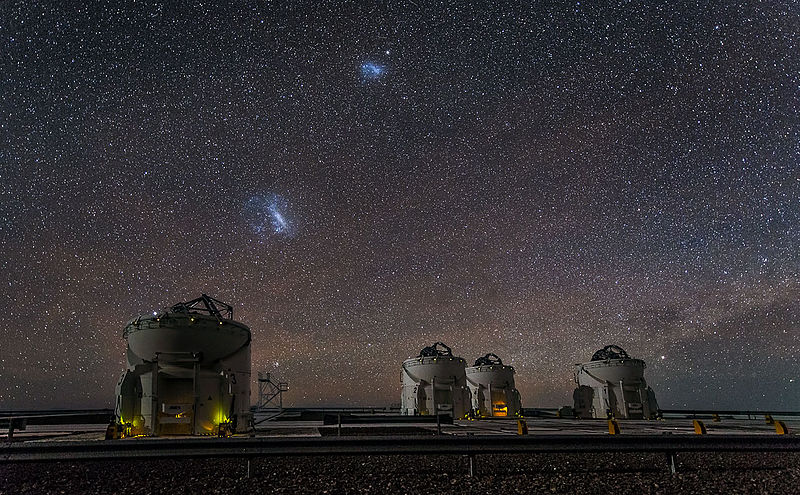For The First Time, Physicists Have Observed a Giant Magnetic 'Bridge' Between Galaxies
For the first time, scientists have detected evidence of a magnetic field that's associated with the vast intergalactic 'bridge' that links our two nearest galactic neighbours.
Known as the Magellanic Bridge, the bridge is a huge stream of neutral gas that stretches some 75,000 light-years between our two neighbouring galaxies, the Large and Small Magellanic Clouds (LMC and SMC). Although researchers had predicted it was there, this is the first observation of its magnetic field, and it could help us understand how these vast bridges come to be.
"There were hints that this magnetic field might exist, but no one had observed it until now," said lead researcher, Jane Kaczmarek from the University of Sydney.
Our closest galactic neighbours, the LMC and SMC (photographed below) are 160,000 and 200,000 light-years from Earth respectively, and are visible in the southern night sky.

Researchers have long known about the Magellanic Bridge that exists between these neighbours, a path with a few known stars inside it. But until now, very little was known about the magnetic field associated with the bridge.
The team has now shown that this newly detected magnetic field is one millionth the strength of Earth's own protective magnetic shield - and it could provide some insight into how it formed.
Two of the leading options are that the magnetic field was generated from within the bridge after the structure formed, or it may have been 'ripped' from the dwarf galaxies thought to have merged and formed the bridge in the first place.
If a bridge between the stars sounds a little sci-fi to you, keep in mind that most of space is made up of different magnetic fields.
"Not only are entire galaxies magnetic, but the faint delicate threads joining galaxies are magnetic, too," said one of the researchers, Bryan Gaensler from the University of Toronto.
"Everywhere we look in the sky, we find magnetism."
The reason we've struggled to study this structure in the past is the fact that these types of cosmic magnetic fields can only be observed indirectly through their effect on other structures in space.
In this case, radio signals from hundreds of very distant galaxies was used to pick up the magnetic field associated with the Magellanic Bridge.
Radio signals can be thought of like waves on the surface of a pond, in that they vibrate along a particular plane in space.
When these radio signals pass through a magnetic field, that plane is rotated, and it allows astronomers to the measure the strength and polarity (direction) of the field.
"The radio emission from the distant galaxies served as background 'flashlights' that shine through the Bridge," said Kaczmarek.
"Its magnetic field then changes the polarisation of the radio signal. How the polarised light is changed tells us about the intervening magnetic field."
Now that we've been able to detect the field, scientists now have a chance to figure out not only how it formed, but the impact it's had on the LMC and SMC.
"In general, we don't know how such vast magnetic fields are generated, nor how these large-scale magnetic fields affect galaxy formation and evolution," said Kaczmarek.
"The LMC and SMC are our nearest neighbours, so understanding how they evolve may help us understand how our Milky Way Galaxy will evolve. Understanding the role that magnetic fields play in the evolution of galaxies and their environment is a fundamental question in astronomy that remains to be answered."
Even cooler is the fact that this is just one study that's part of a bigger project to map the entire Universe's magnetism.
The research has been published in the Monthly Notices of the Royal Astronomical Society, and you can read the full paper for free over at arXiv.org.



No comments